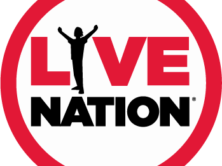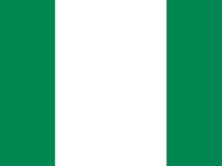(Credit: Organization of News Ombudsmen)
The Organization of News Ombudsmen published a handbook for the public and its ombudsmen (also known as public editor or readers’ editor) members. The 51-page guide, “The Modern News Ombudsmen: A User’s Guide,” was written by the group’s executive director Jeffrey Dvorkin. The Organization for News Ombudsmen says it has “more than 60 members in 26 countries.”
The book says its purpose is to “help news ombudsmen make this complicate position work,” to show news outlets the advantages to having one and to illustrate to the public how ombudsmen work.
“I hope the Handbook will act as a guide for new ombudsmen and for media managers who are thinking of creating the position,” ONO’s executive director Jeffrey Dvorkin told iMediaEthics by e-mail. “It shows just how to do it, what issues to be aware of, how to handle irascible members of the public and even from members of your own newsroom. It should be an inspiration for the concept of a free press because all our democracies depend on media that is transparent and accountable.”
Dvorkin told iMediaEthics by e-mail that ONO created the handbook because “we felt that new members needed some guidance about what goes into creating the position, how to make it sustainable and how to balance the competing interest inside a news organization.”
He added that ONO has “wanted to do this for some time and we were delighted when the Open Society Institute supported the idea.” Open Society Institute, the organization backed by George Soros, has provided funding to ONO. Part of OSI’s 2011 grant to ONO funded the creation of the handbook.
We asked Dvorkin what went into creating the handbook. He told us by e-mail that “There was a lot of consultation with members and former members. We also used the ONO archives to look at how issues and ethics have evolved over the years. It was a product of the best instincts of our members who are deeply committed to the concept of ombudsmanship.”
The handbook addresses the role of ombudsmen, issues ombudsmen face, and ways to respond to complaints and concerns from members of the public. The handbook also includes an FAQ for addressing angry callers, handling stress, and other scenarios ombudsmen may encounter.
“An ombudsman is there to explain how and why the news organization operates and to hold it to account. That is precisely what an ombudsman is tasked to do,” the book says. The handbook reiterates the importance of an ombudsman having independence from the newsroom and the news organization’s management. Ombudsman are to “act as a counterweight or antidote,” question the newsroom and “assure that the content produced is of the highest standards,” according to the book. The organization advised ombudsmen stay “at arm’s length” from the organization and its management. The handbook also recommended ombudsmen don’t work or end up grouped in with public relations.
According to the handbook, the “concept [of ombudsmen] is growing again.” We asked Dvorkin how this is measured. He told iMediaEthics by e-mail that “ONO is experiencing solid growth in Latin America, eastern Europe and parts of French speaking Europe and Africa. After a loss of member in the US (13 in 2008) we now have 4 new American members.”
The handbook identifies several “essential qualities” ombudsmen should have, including “patience, persistence, and perspective” along with “a strong knowledge of journalism practices, a rigorous ethical framework and a willingness to help journalists, management and most of all, the public understand what constitutes good journalism, and why.”
The handbook notes that individual ombudsmen fill different roles in news organizations. “But typically, they investigate and reply to comments and complaints concerning published or broadcast news and feature material. They obtain explanations from editors and other staff members for readers, viewers or listeners. They point out when the news organization fails to provide the information that it should or when it fails to meets its own high standards and best practices.”
One benefit to having an ombudsmen is the possibility that the news organization faces fewer lawsuits, the handbook says. According to Chapter 7, “Most media organizations have found that having an ombudsman tends to diminish the number of lawsuits, but having an ombudsman it does not guarantee that life will be entirely litigation free.” As example, the handbook noted that the UK Guardian’s “legal costs dropped by about 30%” the first year it hired a reader’s editor.
Issues the handbook advises ombudsmen address include what the “chain of command” is, and what the purpose of the ombudsmen job is. The handbook calls for news organizations to publicize what its ombudsmen can or can’t do.
“Stating the mandate of your remit as ombudsman also lets the public know how they can contact you, how you plan to deal with complaints and how you will choose which complaints you deal with (in general terms, of course). It also states how you might proceed with an investigation and how the results of that inquiry are communicated to the complainant and to the media organization.”
According to an e-mail from Dvorkin, the book is provided to ONO members. ONO is selling the handbook to non-members for $25.
Disclosure: iMediaEthics’ publisher, Rhonda Roland Shearer, is an associate member of the Organization of News Ombudsmen. She attended the annual conference in May 2011.






Comments Terms and Conditions